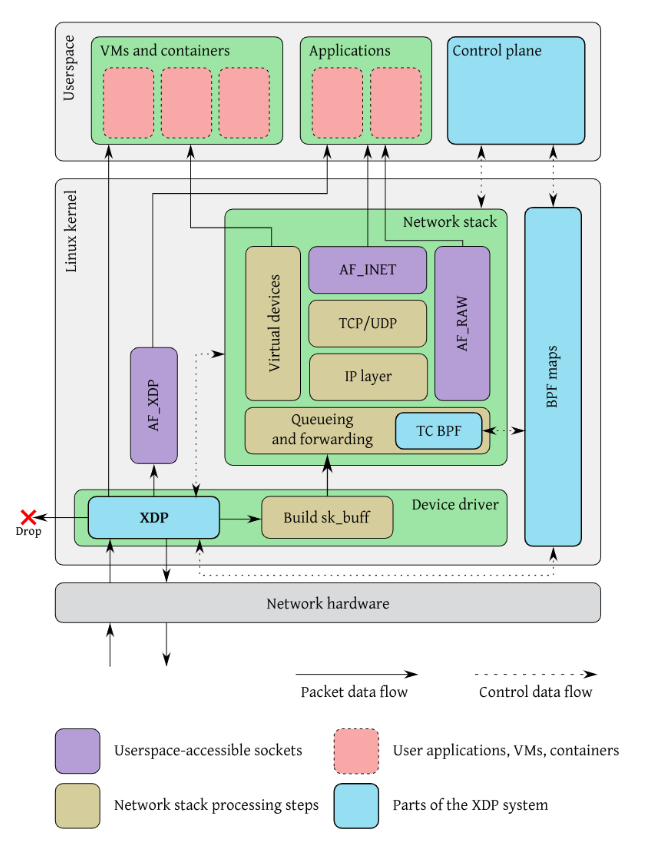Express Data Path-202306122251
# Express Data Path-202306122251
# Summary
Summary for xdp-paper/xdp-the-express-data-path.pdf at master · tohojo/xdp-paper · GitHub
# Notes
# XDP
- The XDP is eBPF based hook
- The XDP can attach to the network interface controller
- just after the Interrupt processing
- Whenever a new packet is received on the network interface, XDP programs receive a callback, and perform operations on the packet.
# Linux network stack
XDP is the first stage of the entire flow.
# XDP integration with the Linux network stack

- XDP integration with the Linux network stack
- On the packet arrival, before touching the packet data, the device driver executes an eBPF program in the main XDP hook.
- There are 5
xdp actions this program can takes :
XDP_ABORTED: error or unexpectedXDP_DROP: drop packetsXDP_TX: send them back out the same interface face it was received onXDP_REDIRECT: redirect to- another interface, including vNICs of virtual machines
- userspace(through the
Af_XDPsocket)
XDP_PASS: allow to proceed the regular networking stack, where a separate TC BPF hook can perfrom further processing before packets are queued for transmission

- This diagram show the execution flow of a typical XDP program.
- There are 4 major components of the XDP system:
- The XDP driver hook is the entry point for an XDP program, and it’s executed when a packet is received from a hardware.
- The eBPF virtual machine execute the byte code of the XDP program, and just-in-time-compiles it for increased performance.
- BPF maps are key/value stores that server as the primary communication channel to the rest of the system.
- The eBPF verifier statically verifies programs before they are loaded to make sure they do not crash or corrupt the running kernel